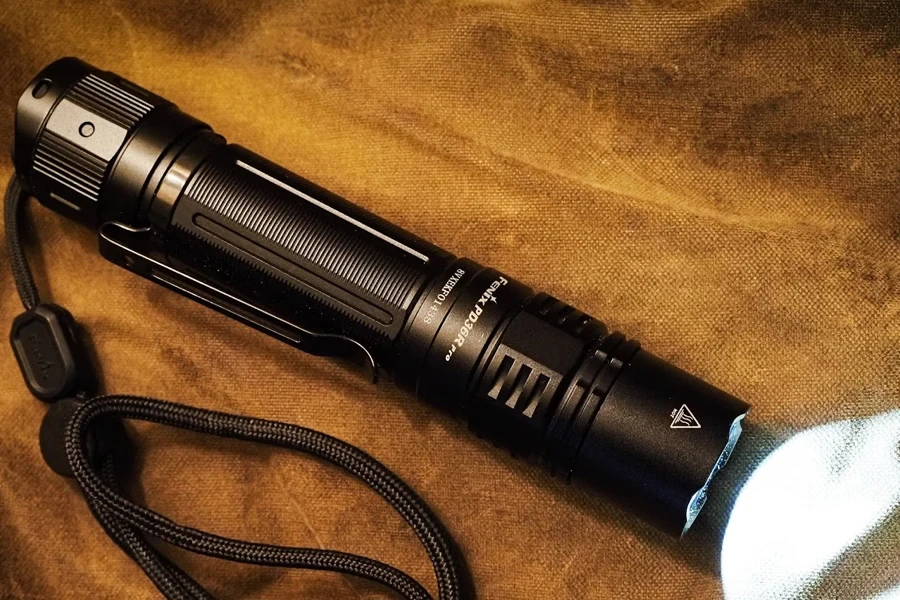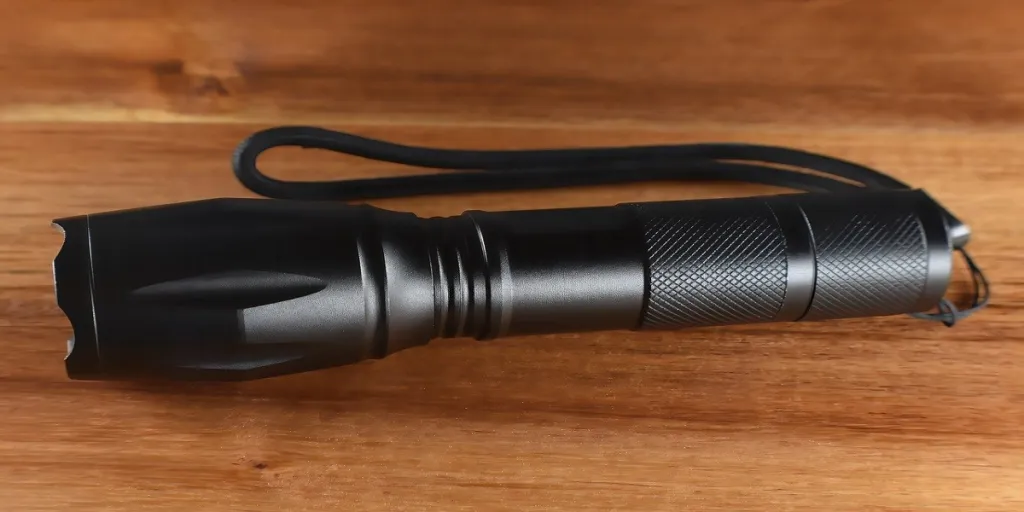Camping flashlights are a trusty sidekick when consumers are out in the wilderness. These tools provide enough light to help campers see in the dark and stay safe during their outdoor adventures. Whether consumers are hiking in the evening or setting up camp at night, they will need at least one flashlight to maintain visibility.
But like every other camping essential, flashlights have variety. They come with different settings and features for specific applications, so what works for one camper may not work for the other. Nevertheless, this article will break down the basics of what campers need and how sellers can make sure their flashlights meet those needs in 2024.
Table of Contents
Why is the camping flashlight market booming in 2024?
Features to prioritize when choosing camping flashlights in 2024
In a nutshell
Why is the camping flashlight market booming in 2024?
The global camping flashlight market was worth US$ 834.1 million in 2021. Experts predict the market will reach US$ 1.4 billion by 2031, registering a 6.0% compound annual growth rate (CAGR) over the forecast period. Why is the market booming? One of the major growth drivers is the increasing demand for flashlights in outdoor activities, especially camping. Technological advancements in the flashlight market also positively impact market growth.
Reports suggest that Asia Pacific will account for the largest share of the camping flashlight market. Meanwhile, experts also say North America will hold a sizable market share as more U.S. consumers accept and purchase rechargeable flashlights.
Features to prioritize when choosing camping flashlights in 2024
Brightness (lumens)
Brightness is an important feature of camping flashlights because it determines how well consumers will see in the dark and how far they can illuminate their surroundings. Manufacturers measure the brightness of their flashlights in lumens—so the higher the lumens, the brighter the flashlight. However, the number of lumens needed depends on the consumer’s intended use and personal preference (lumens also determine size, battery life, and beam range). Here is a table showing different lumen ranges, their descriptions, and their suitable applications.
| Lumen range | Suitable for |
| Less than 100 | These flashlights have the lowest brightness. However, they are perfect for consumers seeking flashlights for everyday use, reading inside tents, and close-up tasks. |
| 100 to 400 | These flashlights offer medium brightness. Most campers and outdoor activists won’t need anything more than this for high visibility. |
| 400 to 1000 | These flashlights have high brightness. They can easily light up campgrounds, provide enough visibility for hunting, and act in self-defense against wild animals. |
| 1000 to 3000 | These flashlights offer very high brightness. While they are too bright for casual use, 1000 to 3000-lumen flashlights will be handy for search and rescue emergencies or professional camping. |
| 3000 and above | These flashlights offer extreme brightness. Many experts don’t recommend these for casual use. |
Batteries
When deciding on flashlight batteries, the first thing to consider is the battery type—and there are two main types: flashlights with rechargeable batteries and those with disposable ones.
The most common rechargeable batteries for flashlights are the 16340, 18650, and 21700 types. Some flashlights run on disposable Alkaline batteries but lose power faster, especially when it’s cold. So, most campers prefer rechargeable Li-ion batteries—businesses may even throw in a portable battery charger to their offerings for added value.
Pro tip: A good camping flashlight should also be easy to recharge. Ideally, consumers should be able to charge them in a car if the flashlights use built-in rechargeable batteries. These flashlights should also hold their charge well during use!
Battery life is another important factor to consider when handling flashlight batteries. The key here is thinking about how much light consumers will need and for how long. A longer battery life means they can rely on their flashlight for longer, especially when they don’t have access to a power source or spare batteries. A shorter battery life means they may have to carry more batteries or recharge more often, which is inconvenient or impractical for campers. For more context, a single 18650 battery frequently outperforms 3 to 5 AA batteries in runtime.
For a short camping trip, consumers may not need spare batteries. They’ll enjoy their outdoor adventure with flashings using a single 18650 battery, especially if they keep the brightness around 30 lumens. But for longer trips, flashlights with larger batteries (like a 21700 or even a 26650) might be a better choice.
Note: Battery numbers like 16340, 21700, and 26650 indicate battery cell shape and size. Manufacturers use these codes for rechargeable lithium-ion batteries that power several gadgets, including flashlights.
Size and weight
Size and weight are important factors to consider when choosing camping flashlights for several reasons. Firstly, when camping, consumers often pack all their gear, so minimizing weight and bulk is crucial to ensure they can comfortably carry everything you need for your trip. For this reason, campers often prefer lightweight and compact flashlights.
A lightweight and compact flashlight will take up less space in backpacks and add minimal weight, leaving more room for other essentials like food, water, and shelter. This factor also makes it easier to maneuver and hike with all that gear, especially if consumers cover long distances or navigate challenging terrain. Additionally, the size and weight of a flashlight can impact its portability and usability during camping trips.
A smaller, lighter flashlight is easier to handle and carry around the campsite, allowing campers to illuminate their surroundings without feeling weighed down or cumbersome. And if they plan on carrying their flashlights in pockets or attaching them to their gear via clip or strap, campers will prefer lighter and smaller models. Overall, compact and lightweight designs will be more convenient and comfortable to carry for extended periods or use around the campsite.
Water resistance

Water resistance is another important factor when choosing camping flashlights because the activity often involves exposure to weather conditions and environments where moisture, rain, or water splashes are common. Camping trips can be unpredictable, and campers may encounter rain, fog, or damp conditions.
Water-resistant flashlights will withstand exposure to moisture, allowing them to function reliably even in wet weather. More importantly, water resistance is often an indicator of overall flashlight durability in flashlights. Typically, manufacturers design such flashlights with sealed components and robust construction materials to give them impressive water resistance. However, it also makes them more resilient to the rough handling, drops and impacts notorious with outdoor activities.
Light modes
Different camping environments may require varying levels of illumination. For example, while setting up camp in a well-lit area during daylight hours may not require the brightest setting, navigating through dense foliage or exploring caves may require higher brightness levels. Having a flashlight with adjustable light modes allows campers to tailor the illumination to specific conditions and tasks.
Common light modes to prioritize include high brightness, low brightness, strobe, SOS, and red light mode. Bright lights are great for lighting up big spaces or seeing things well. Dim lights save battery and are good for reading or doing things that don’t need a lot of light. Flashing and SOS modes are important for emergencies, while red light mode helps campers see in the dark without hurting their eyes.
In a nutshell
Things can get very dark when outside in nature at night. That’s where a trusty camping flashlight comes in handy, making outdoor adventure more enjoyable. No wonder up to a million folks are scouring the web for them in February 2024. But if businesses want to cater to this crowd, they must ensure they offer the best. So, before stocking up, it’s crucial to ensure that the flashlights you stock have all the desired features discussed in this article.




